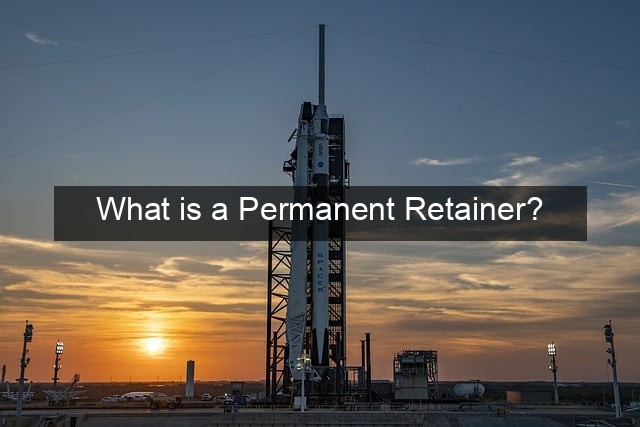What is a Permanent Retainer?
- What is a Permanent Retainer?
- Types of Permanent Retainers
- Fixed Retainers: The Most Common Choice
- Removable Retainers: A Flexible Alternative
- Benefits of Permanent Retainers
- Long-Term Stability: Keeping Your Smile Straight
- Convenience and Discreetness: A Hassle-Free Solution
- Potential Drawbacks of Permanent Retainers
- Oral Hygiene Challenges: Adapting Your Routine
- Potential for Damage: Understanding the Risks
- Cost of Permanent Retainers
- Factors Influencing Price
- Frequently Asked Questions (FAQ)
- Common Queries about Permanent Retainers
- Conclusion: Making the Right Choice for Your Smile
 “`html
“`html
What is a Permanent Retainer? Your Guide to a Straight Smile That Lasts
A picture-perfect smile is often a coveted asset. Many invest time and resources into orthodontic treatment to achieve it. But what happens after the braces come off? How do you maintain that hard-earned alignment? That’s where permanent retainers come into play. These discreet devices work behind the scenes to keep your teeth in their ideal positions, preventing shifting and relapse. This comprehensive guide will delve into the world of permanent retainers, exploring their benefits, drawbacks, costs, and everything else you need to know to make an informed decision about your post-orthodontic care.
Types of Permanent Retainers
Fixed Retainers: The Most Common Choice
Fixed retainers, also known as bonded retainers, are the most prevalent type. They consist of a thin wire bonded to the back of your teeth, typically the lower front six. This wire is custom-fit to your mouth and cemented in place, offering a discreet and effective way to maintain tooth alignment. The placement behind the teeth makes them virtually invisible, allowing you to smile with confidence.
These retainers are usually made of stainless steel or a more aesthetically pleasing composite material. They are durable and require minimal maintenance. However, they can pose challenges for oral hygiene, as flossing requires a bit more effort with a threader or special floss.
Fixed retainers are generally recommended for patients who have undergone significant orthodontic correction or are prone to relapse. Their constant presence ensures continuous support for the teeth, preventing unwanted movement.
Removable Retainers: A Flexible Alternative
While not strictly “permanent,” removable retainers are often worn long-term, sometimes indefinitely, blurring the lines between permanent and temporary. These retainers are custom-made and can be taken out for eating, cleaning, and special occasions. They offer more flexibility than fixed retainers but require diligent wear to be effective.
There are two main types of removable retainers: Hawley retainers and clear plastic retainers (like Invisalign). Hawley retainers are made of acrylic and metal wires, while clear retainers are made of a transparent plastic material. Both effectively maintain tooth alignment but differ in aesthetics and comfort.
The success of removable retainers hinges on patient compliance. Forgetting to wear them can lead to tooth shifting and compromise the results of orthodontic treatment.
Benefits of Permanent Retainers
Long-Term Stability: Keeping Your Smile Straight
The primary benefit of a permanent retainer is its ability to provide long-term stability for your teeth. Once your braces are removed, your teeth are still susceptible to shifting back to their original positions. A permanent retainer prevents this relapse, ensuring that your investment in orthodontic treatment pays off.
This stability is particularly important for patients who have had significant corrections, such as closing gaps or correcting severe crowding. The constant support provided by the retainer helps the teeth settle into their new positions and maintain their alignment over time.
With a permanent retainer, you can enjoy the confidence of knowing that your smile will remain straight and beautiful for years to come, without the worry of daily retainer wear.
Convenience and Discreetness: A Hassle-Free Solution
Permanent retainers offer unparalleled convenience. Unlike removable retainers, you don’t have to worry about remembering to wear them or cleaning them regularly. They are bonded to your teeth and require minimal maintenance, making them a hassle-free solution for maintaining your smile.
Their discreet placement behind the teeth ensures that they are virtually invisible. You can smile, talk, and eat without anyone knowing you have a retainer. This is a significant advantage for those who are self-conscious about wearing visible orthodontic appliances.
The combination of convenience and discreetness makes permanent retainers a popular choice for patients seeking a low-maintenance and aesthetically pleasing solution for long-term tooth retention.
Potential Drawbacks of Permanent Retainers
Oral Hygiene Challenges: Adapting Your Routine
While permanent retainers offer numerous benefits, they can present some challenges for oral hygiene. The wire bonded behind the teeth can make it more difficult to floss effectively. Food particles can get trapped around the wire, increasing the risk of plaque buildup and gum inflammation.
To maintain optimal oral hygiene with a permanent retainer, you’ll need to adapt your flossing technique. Using a floss threader or specialized floss designed for braces and retainers can help you clean effectively around the wire.
Regular dental checkups are also essential. Your orthodontist can assess your oral hygiene and provide guidance on proper cleaning techniques. They can also professionally clean your retainer and remove any stubborn plaque or tartar buildup.
Potential for Damage: Understanding the Risks
Like any orthodontic appliance, permanent retainers can be damaged. Biting into hard foods, sticky candies, or using your teeth as tools can cause the wire to break or detach from the teeth.
If your retainer becomes damaged, it’s crucial to contact your orthodontist immediately. A broken or loose retainer can not only compromise the alignment of your teeth but also irritate your gums and tongue.
While damage is possible, it can usually be prevented by following your orthodontist’s instructions and avoiding harmful habits. Regular checkups can also help identify potential issues early on.
Cost of Permanent Retainers
Factors Influencing Price
The cost of permanent retainers can vary depending on several factors. These include the complexity of the case, the materials used, the orthodontist’s fees, and your geographical location.
Typically, permanent retainers are included in the overall cost of orthodontic treatment. However, if you require a replacement retainer due to damage or loss, there will be an additional fee.
It’s essential to discuss the cost with your orthodontist upfront so you can understand what to expect and plan accordingly. Many orthodontists offer payment plans to make treatment more affordable.
Frequently Asked Questions (FAQ)
Common Queries about Permanent Retainers
- How long do permanent retainers last? Typically, they can last for many years, even decades, with proper care.
- Can I get a permanent retainer on just my top teeth or just my bottom teeth? Yes, placement depends on your individual needs.
- Do permanent retainers hurt? The bonding process is typically painless.
- Can I eat normally with a permanent retainer? Yes, but avoid excessively hard or sticky foods.
- Will my permanent retainer affect my speech? There may be a brief adjustment period, but speech is rarely affected long-term.
- How do I clean my permanent retainer? Use a floss threader or specialized floss and brush carefully.
| Retainer Type | Pros | Cons |
|---|---|---|
| Fixed (Permanent) | Discreet, Convenient, Effective | Oral Hygiene Challenges, Potential for Damage |
| Removable | Flexible, Easier Cleaning | Requires Diligence, Can be Lost |
External Resources:
Conclusion: Making the Right Choice for Your Smile
Permanent retainers offer a valuable solution for maintaining the results of orthodontic treatment. Their discreet design, long-term effectiveness, and convenience make them a popular choice. However, it’s crucial to be aware of the potential challenges, such as oral hygiene difficulties and the possibility of damage. By understanding the benefits, drawbacks, and costs associated with permanent retainers, you can make an informed decision that best suits your individual needs and lifestyle. Consulting with your orthodontist is the best way to determine if a permanent retainer is the right choice for you. They can assess your specific case, discuss your options, and provide personalized recommendations to help you achieve a lasting, beautiful smile.
“`


